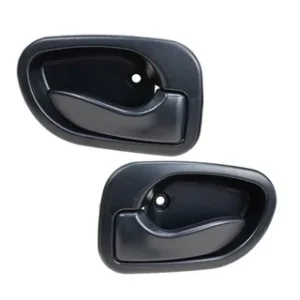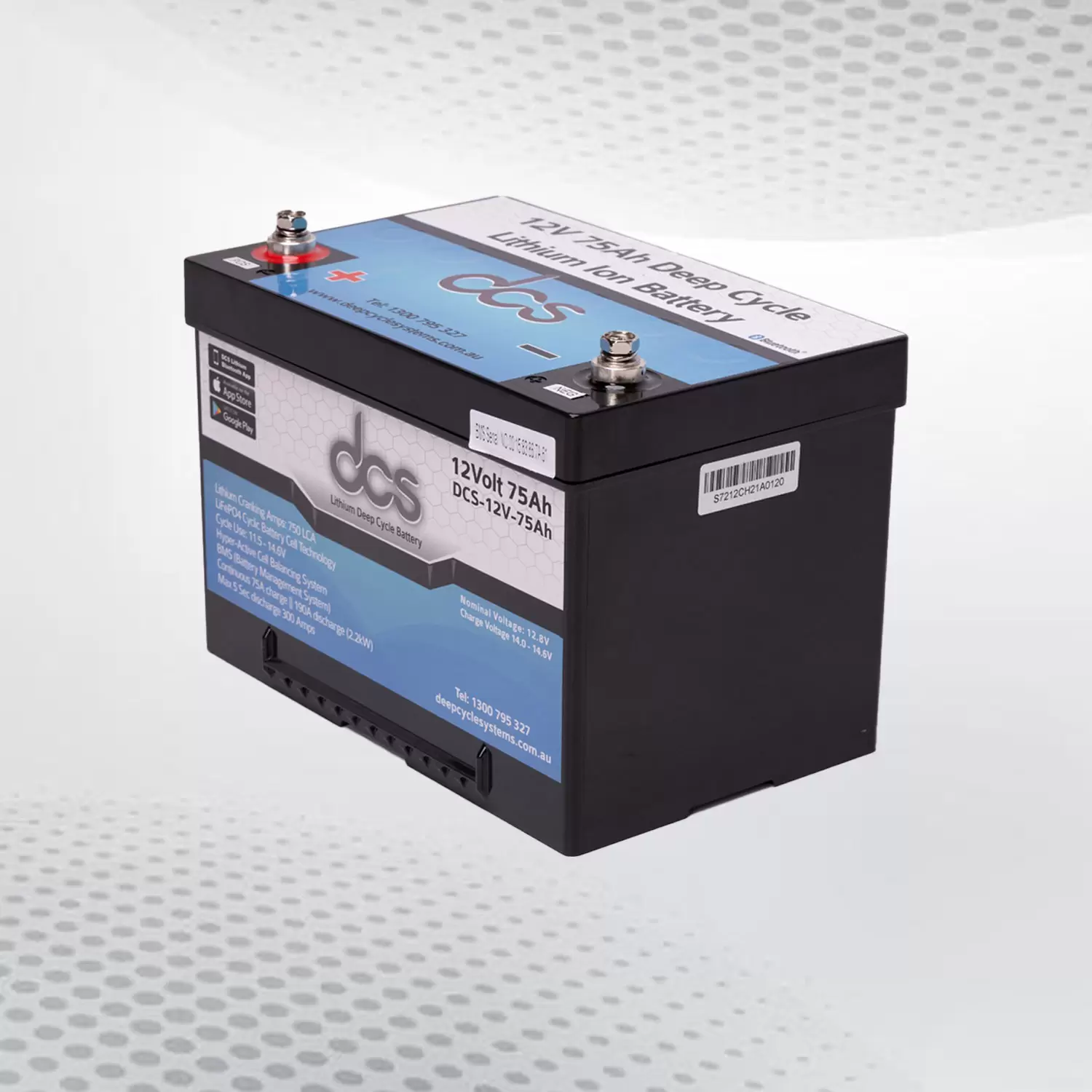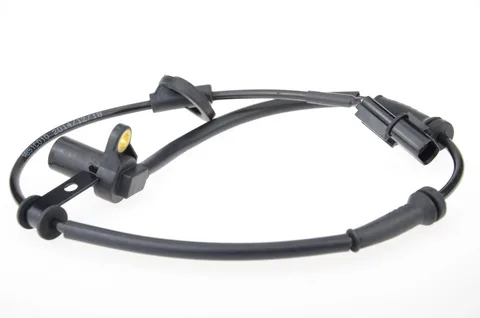Your Hyundai Accent is more than just a car; it’s your trusty companion on countless adventures. Whether navigating city streets or cruising down scenic highways, every detail counts, including the often-overlooked Hyundai Accent Inner Door Handle. This small but essential component is vital in ensuring that you can quickly enter and exit your vehicle. However, like any part of your car, it can wear out over time. This blog post will explore everything from its mechanisms to simple maintenance tips that keep it functioning smoothly.
The Science Behind a 2007 Hyundai Accent Interior Door Handle: How It Functions
The 2007 Hyundai Accent Interior Door Handle may seem simple, but it’s an ingenious piece of engineering. At its core, the handle operates through a series of levers and cables that connect to the vehicle’s locking mechanism. You engage this intricate system when you pull on that sleek little lever.
As you grip the handle, your fingers apply force that pulls on a rod or cable hidden within the door panel. This action releases the latch, allowing you to open your door quickly. It’s fascinating how such a small motion can unlock an entire world of possibilities.
This design ensures safety and convenience; no one wants their car doors flinging open unexpectedly! The internal components work harmoniously to keep everything secure until you’re ready for adventure.
However, these parts are also subject to wear and tear from everyday use—after all, life happens! Dust and grime can accumulate over time, leading to friction and potential failure if neglected.
Understanding this mechanical ballet helps you appreciate what goes into every journey in your Accent. With just a little attention and care, you’ll ensure those handles continue working flawlessly for years ahead.
Signs That Indicate Your Hyundai Accent Interior Door Handle Replacement is Failing
A functional interior door handle is essential for your Hyundai Accent’s usability and safety. If you notice issues with your handle, you should address them promptly.
Common signs of a failing Hyundai Accent Interior Door Handle Replacement include difficulty opening the door from inside or outside. If the handle feels loose or unresponsive, that could also be a warning sign. Another indication is if you hear strange noises when operating the handle—these sounds may suggest internal mechanisms are wearing out.
Additionally, check for visible wear and tear, such as cracks or breaks in the handle’s plastic casing. These physical changes can affect performance over time.
If you’re experiencing any of these symptoms, consider replacing your inner door handle sooner rather than later to maintain convenience and safety in your vehicle. Regular maintenance enhances functionality and prolongs the life of this crucial component in your Hyundai Accent.
Maintenance Tips for the Hyundai Accent Door Handle Inside
Maintaining your Hyundai Accent Door Handle Inside is a simple yet effective way to ensure smooth functionality and longevity. First, regular inspection is key. Make it a habit to check the handle for any signs of wear or damage during routine car washes or maintenance checks.
Next, look for dirt and grime buildup around the handle area. Over time, this can lead to a sticky operation. A quick wipe with a soft cloth can prevent these issues before they escalate into more significant problems.
Remember lubrication! Using a silicone spray or graphite lubricant on moving parts helps maintain ease of use while preventing rust build-up in those hard-to-reach spots. Just be sure not to overdo it; a little goes a long way.
Consider protecting your door handle from harsh sunlight and drastic temperature changes. If you often park outside, sunshades could help reduce exposure that might weaken the materials over time.
Educate yourself about DIY repairs so you’re prepared if issues arise unexpectedly. Understanding how your vehicle works empowers you to take better care of its components, including that trusty inner door handle you rely on daily.
Cleaning and Lubricating the Inner Door Handle
Keeping your inner door handle clean and lubricated is essential for smooth functionality. Over time, dust, dirt, and grime can gather in the crevices. This buildup not only looks unsightly but can also hinder the handle’s performance.
To start cleaning, you’ll need a soft cloth or sponge and mild soap mixed with warm water. Gently wipe down the surface of the handle to remove any visible dirt. For those hard-to-reach areas, use a cotton swab dipped in soapy water to reach every nook and cranny.
Once it’s squeaky clean, it’s time for lubrication. A silicone spray lubricant works wonders here; ensure it’s safe for plastic surfaces. Apply a small amount directly onto the moving parts of the door handle—this will ensure that it operates smoothly without any annoying sticking or grinding noises.
Remember not to overdo it! Excess lubricant can attract more dirt and debris than necessary. Keeping things minimal ensures longevity while maintaining that sleek feel when opening or closing your door.
Remember about regular maintenance checks! Making this simple cleaning routine part of your car care routine could save you from larger repairs down the line while keeping everything looking pristine.
Repair options for the Door Handle
When your inner door handle starts showing signs of wear, don’t despair. There are several repair options available that can breathe new life into this essential component. First, a simple inspection might reveal the handle is loose or misaligned. A quick tightening of screws could solve the problem without any further fuss.
If you notice cracks or breaks in the plastic, consider using a strong adhesive designed for automotive parts. This will help hold everything together while maintaining functionality. Patience is key here; allow ample time for the glue to set before testing it.
For more serious damage, replacement parts can be sourced easily online or at local auto shops. Many retailers offer aftermarket handles that fit seamlessly with your 2007 Hyundai Accent’s interior design, often at a fraction of what you’d pay at a dealership.
If you encounter persistent issues after DIY repairs, it may be wise to enlist professional help. Skilled technicians possess the tools and expertise to ensure that everything works smoothly again.
Remember to keep receipts and warranties handy when purchasing parts or services. This will not only provide peace of mind but also ensure that you’re covered if anything goes awry later.
Replacement Guidelines for the Hyundai Accent Inside Door Handle
When the time comes to replace your Hyundai Accent Inside Door Handle, preparation is key. First, ensure you have all necessary tools on hand. You’ll typically need a screwdriver set and perhaps a trim removal tool for those tricky clips. A little organisation can save you time and frustration.
Start by carefully removing any panels that might obstruct access to the handle. Use your trim removal tool gently; this step is crucial, as you don’t want to damage surrounding areas. Patience pays off here!
Once exposed, examine how the old handle is attached. Screws or clips usually secure it—note their positions before proceeding with disassembly so reinstallation goes smoothly later on.
Now, take out the faulty handle with care. If it feels stuck or resistant, double-check for hidden screws or additional clips that may need attention first.
With everything in place for installation, position your new inner door handle where the old one once sat. Reverse your earlier steps: Secure it tightly, but avoid over-tightening, which could lead to other issues. Delicately reattach any panels, ensuring they snap back into place without compromising anything else around them.
Should You Replace Your Hyundai Accent Interior Door Handle or Repair It?
When faced with a malfunctioning Hyundai Accent Interior Door Handle, the dilemma of whether to replace or repair it often arises. It’s like standing at a crossroads, each path promising different outcomes for your vehicle’s interior.
Choosing to repair can be an appealing option. If the damage is minor—perhaps just some wear and tear—a simple fix might restore functionality without breaking the bank. Sometimes, all it takes is a bit of cleaning or lubrication to breathe new life into that stubborn handle.
Conversely, it may be time for a replacement if your door handle has seen better days—with cracks or persistent sticking. Investing in a new part ensures reliability and peace of mind when you’re getting in and out of your car, especially during those rainy days when you need quick access.
Consider how long you plan on keeping your Hyundai Accent. If it will stick around for years, opting for a replacement could save headaches. But if you’re ready to move on soon, repairing might suffice until then.
Weigh both options carefully based on condition and budget. Each choice offers unique benefits tailored to your situation and driving lifestyle.
How to Clean and Protect Your Door Handle from Damage?
Keeping your inner door handle clean and protected is essential for its longevity. Start by gathering a few basic supplies: soft microfiber cloths, mild soap, and water. Avoid harsh chemicals that can damage the handle’s finish.
Begin with a gentle wipe-down using a damp cloth soaked in soapy water. This helps to remove dirt and grime without scratching the surface. Be sure to get into all those nooks where debris loves to hide. A little patience goes a long way here!
After cleaning, carefully dry it with another microfiber cloth to prevent moisture buildup that could cause corrosion over time. Pay special attention to the edges—these areas often see more wear and tear.
Next, consider applying a protective coating designed explicitly for plastics or metals found in car interiors. These products form an invisible barrier against UV rays and scratches, keeping your handle looking new longer.
Make it a habit to regularly check on your door handles during routine car washes or maintenance checks. Early detection of wear will save you from more significant issues! Keeping them clean isn’t just about looks; it’s about ensuring functionality, too.
Conclusion
Maintaining your Hyundai Accent inner door handle is more than just a chore; it’s essential to keeping your vehicle in top shape. A little attention goes a long way, ensuring that every entry and exit from your car remains smooth and hassle-free. Regular inspections can catch potential issues before they escalate. Being proactive about maintenance extends the life of the door handle and enhances your overall driving experience. Cleaning and lubricating might seem simple, but they’re crucial steps in preventing wear and tear.
FAQS
How often should I clean my Hyundai Accent inner door handle?
It is wise to give your Hyundai Accent inner door handle a good cleaning every few months. Regular maintenance can prevent buildup and ensure its longevity.
What are the common signs of a failing door handle?
If you notice resistance when pulling the handle, unusual noises, or if it feels loose, these could be indicators that your door handle needs attention.
Can I repair my interior door handle myself?
Yes, many repairs can be done at home with essential tools. However, if you’re unsure or uncomfortable with DIY projects, seeking professional help is always a good idea.
Is it better to replace or repair a damaged inner door handle?
This depends on the extent of the damage. Minor issues can often be repaired easily; however, severe wear may necessitate replacement for optimal functionality.
What kind of lubricant is best for maintaining the inner door handle?
A silicone-based spray lubricant works well, reducing friction without attracting dirt. Avoid petroleum-based products, which might cause damage over time.
| Related Business Listings |
| Contact Directory |
| Local Business Profiles |




